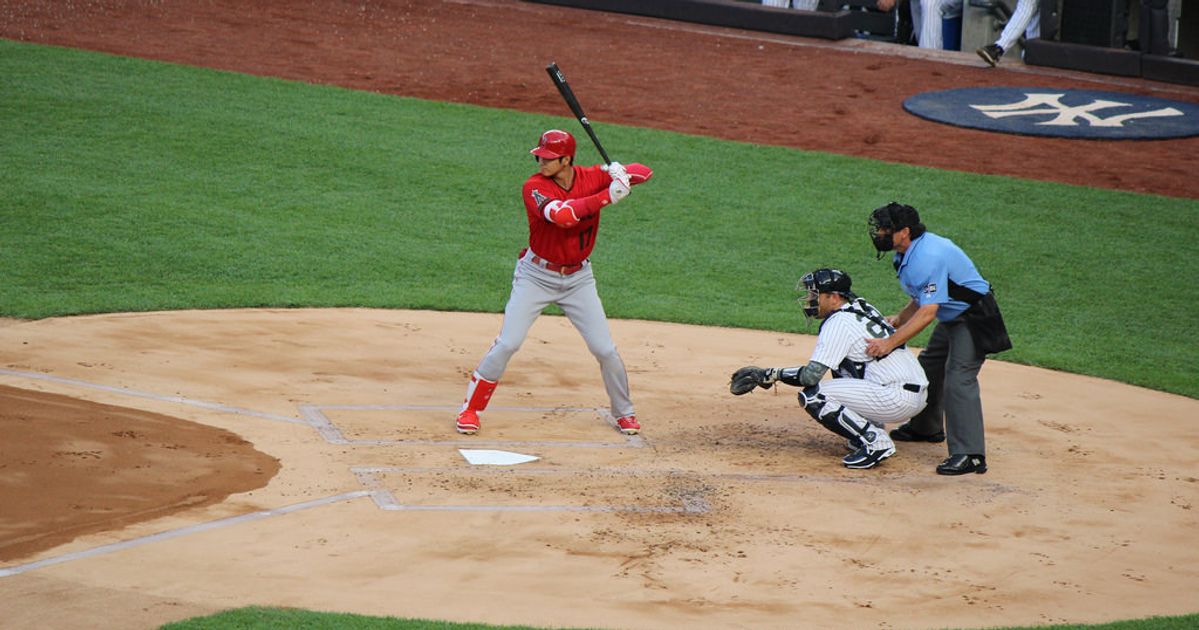The first season of Los Angeles Angels two-way star Shohei Ohtani's Major League Baseball career will end on a sad note. It was reported on Wednesday that Ohtani has suffered new damage to his already-injured right elbow and that he will probably require Tommy John surgery.
What that means is less clear than usual. A pitcher wouldn't be seen for 12-14 months after Tommy John. Contrastingly, Ohtani's unique status as a two-way player means he could play as a DH as early as six to eight months from now. If he were to get the surgery now, it's entirely possible he could be a mainstay in the Angels' lineup early in 2019, even if he won't pitch until 2020.
But would that be wise? Or, to go even further, has the way the Angels handled Ohtani's injury from start to finish been particularly wise? Could they have done things differently and perhaps avoided this fate?
Unknown territory
So much of how to treat Ohtani is uncharted territory. He's arguably the first player since Babe Ruth stopped pitching that has performed this kind of two-way role as a hitter and a pitcher. How to juggle the two responsibilities and allow him to recuperate on an MLB schedule, which is structured differently than the Nippon Professional Baseball in Japan, was a program that had to be devised on the fly.
That was an even bigger problem considering the Angels already knew Ohtani was coming in with a Grade 1 elbow sprain. He played fantastically in his first few months, pitching to a 3.31 ERA in 10 starts with a K/9 of 11.0 while slashing .289/.372/.535 as a hitter with six home runs, eight doubles, a triple and 20 RBI in 114 at-bats through June 8, the day he went on the disabled list when he was diagnosed with a Grade 2 sprain in his elbow.
There were many suggestions that Ohtani should have Tommy John immediately, post-diagnosis. It would likely have kept him out until 2020 anyway, but it would nip the problem in the bud. But the Angels and Ohtani chose to attack the issue similarly to how the New York Yankees approached a similar situation with Masahiro Tanaka in his first season in the United States. That involved platelet-rich plasma injections and rehab, with an eye toward having him pitch at the end of the year.
Ohtani returned from the DL on July 2 to serve solely as a hitter. He's raked just as much since (.286/.362/.617, eight doubles, 12 homers, 27 RBI in 133 AB), and last week he had his first start since going on the DL. He threw 49 pitches in 2.1 innings and while things started out well, it was quickly clear that something was wrong. As this graph tweeted by Mike Petriello showed, by the time he reached 15-20 pitches, his velocity was dropping fast, bottoming out at 89 MPH. The Angels initially blamed the loss of velocity on back stiffness, but a later MRI revealed yesterday's diagnosis.
Dangerous handling?
So now the question is simple: did the Angels handle this situation properly? There are arguments on both sides.
Many pundits, including Petriello and Bill Shaikin, point out that the timetable for Ohtani's return as a pitcher won't be significantly different if he had had surgery in June or now, and that Ohtani had to pitch at some point to see if his rehab had worked. Had he waited until next year and the rehab had failed, he would have missed 2019 and potentially a good portion of 2020.
The variable here is Ohtani's hitting. Angels general manager Billy Eppler insisted in a press conference it had nothing to do with the additional elbow damage, but there's really no way of knowing whether that's true because no one has tried to do what Ohtani is doing for almost 100 years. There's no baseline to figure out whether allowing Ohtani to hit affected his response to the PRP treatments and rehab. The evidence right now is mixed. When Tanaka rehabbed his elbow in 2014, he came back and has pitched without major incident since. However, two of Ohtani's teammates, Garrett Richards and Andrew Heaney, have undergone PRP therapy and still been forced to go under the knife in the last two years.
That may mean nothing, but it is worth noting Ohtani would be the seventh notable Angels starter to have Tommy John since 2014, including Richards and Heaney. That's a huge number, and perhaps indicative of a traning staff that isn't handling their pitchers properly—which could mean anything could happen in his recovery process. It also presents even more of a question about whether he should be allowed to hit as he completes his pitching rehab.
At the end of the day, the evidence may point not to a mishandling of Ohtani as an individual, but a systemic issue with pitchers and their elbows within the Angels organization something the team will have to take a big look at if they want to keep any of their pitchers—not just Ohtani—healthy in the long term.
Explore new topics and discover content that's right for you!
MLB The Show



